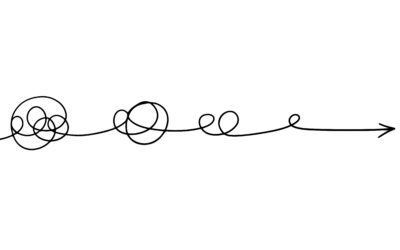
Closing the gap between expectations and reality
In this video, Liz offers insight into the gap between expectation and reality on teams, suggesting four requirements for expectations to be valid.
Understanding the gap between expectation and reality
In any team or indeed even in any relationship, the gap between expectation and reality will often determine the level of disappointment, frustration and unproductive conflict on that team.
In my work developing leaders, teams and workplace cultures, the smaller the gap the lower the levels of disappointment, frustration and unproductive conflict.
And it is obvious to say that the smaller the gap, the better the results will be on your team and also, the quicker the team can achieve those results. This is the hallmark of a cohesive and high-performing team.
As a leader there is a lot you can do to close this expectations gap. It begins with setting valid expectations.
There are four requirements for an expectation to be valid:
1. Conscious
In other words, an expectation is only valid if you are conscious or aware that you even have it. A lot of the time we don’t spend time thinking about what our expectations even are, at least, not until we experience disappointment.
Example – A few years ago, I engaged the services of a contractor to help me with a piece of work. It was a very frustrating experience for me. I was pleased with the outcome, but not the journey. I would send them an email that seemed to disappear into cyberspace. It was only then that I realised that I had the expectation that they would at least acknowledge my emails, even if it didn’t require an answer. A simple, thank you or noted would have done the trick.
2. Credible
In other words, realistic or reasonable. An expectation is only valid if it is something we can reasonably or realistically or credibly expect from someone.
One question I ask myself to test the credibility of my expectations is, “would I be prepared to do this?”
3. Communicated clearly
This may sound obvious but I have coached many leaders on this one. Do not assume that your team members know what you expect from them. What might seem obvious to you might not be obvious to someone else. It is unfair to expect anyone to meet an expectation that they didn’t even know you had of them. Communicate your expectation clearly and consistently.
One of my favourite sayings is common sense is not so common after all.
4. Confirmed
An expectation is only valid if the person from whom you are expecting it, has actually confirmed or agreed that they will indeed be willing and able to meet it. And don’t forget, silence does not necessarily mean consensus. Good practice would be verbal confirmation followed up by written confirmation. Depending on the topic at hand.
All four of these need to be present for an expectation to be valid and to avoid doubt and any misunderstandings. Think how much time you could save just by practicing these 4C’s.
Espresso Leadership
Would you like to receive our Espresso Leadership videos and other useful resources?
We treat your personal data with care, view our privacy notice here.
Follow us
Recent insights
Related Content
Clarity in the midst of uncertainty
As we draw to the end of 2021, one of the most important lessons that we can learn from the last 12 months is how essential it is to establish clarity even in the midst of uncertainty. Is that an oxymoron? No, not at all. You see, uncertainty is difficult to...
How trust fosters innovation
In this video Liz explains how the right kind of trust can cause ideas to florish and innovation to come to the fore. Espresso Leadership Would you like to receive our Espresso Leadership videos and other useful resources? We treat your personal...
Dealing with office politics
In this video Liz address the subject of office politics. it's damaging effect on teams and organisations and what can be done by leaders to deal with it.When I work with leaders to build a healthy workplace culture, one of the first things I look for to determine how...



